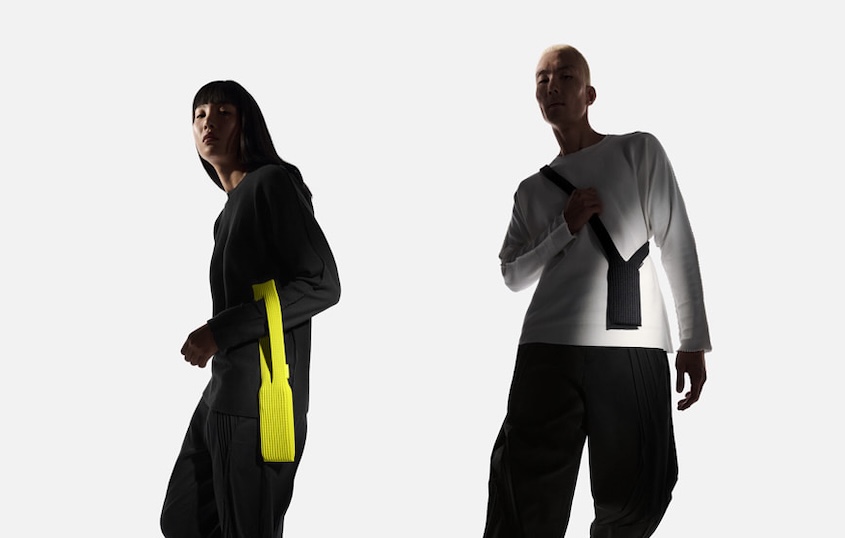The iPhone Pocket Walks the Line Between Style & Status

When Apple and ISSEY MIYAKE unveiled the new “iPhone Pocket,” they introduced more than a phone accessory. It’s billed as “a beautiful way to wear and carry iPhone,” combining fashion and technology into something deliberately simple yet instantly polarizing.
The product comes in two sizes: a short-strap version priced at US $149.95 and a long-strap cross-body version at US $229.95. It’s made with a 3D-knitted structure inspired by the idea of “a piece of cloth,” designed to hold any iPhone and small items like keys or AirPods. Apple calls it “a celebration of simplicity and movement,” developed with the Miyake Design Studio.
The iPhone Pocket isn’t just functional—it’s a statement about status and consumer identity. The collaboration with ISSEY MIYAKE pushes Apple deeper into the world of high fashion, where minimal design meets luxury pricing. It can be worn cross-body, carried by hand, or attached to a bag. Its color palette includes both bright and neutral tones, inviting users to match it with their phone models and personal style.
At over 200 dollars for a phone carrier, the iPhone Pocket has quickly become a talking point online. Many view it as a marker of exclusivity rather than practicality. Its limited release through select flagship stores and Apple’s online shop reinforces that sense of luxury and deliberate scarcity. For a company that already sells lifestyle as much as hardware, the move feels intentional.
Apple’s accessories often blur the line between technology and fashion, and this one pushes that boundary even further. The question is whether this “pocket” will evolve into a new kind of social signal. A person wearing it isn’t just carrying a phone; they’re visibly investing in a symbol of taste, privilege, and brand allegiance. That visibility could deepen class perceptions in a time when many are watching their spending closely.

It’s also possible this controversy is part of the plan. Some marketing analysts refer to this as negative marketing, a strategy where brands intentionally provoke reactions to spark conversation. By pricing the iPhone Pocket so high and framing it as a fashion statement, Apple may have anticipated both the admiration and the mockery. In a sense, every critique becomes part of the campaign. The debates, memes, and disbelief only extend the product’s reach and strengthen its cultural presence.
Whether by design or coincidence, the iPhone Pocket has achieved exactly that. People are talking. Some admire its simplicity, others ridicule its purpose, but nearly everyone has an opinion. In the end, the real product might not be the pocket itself, but the conversation around it.
When a tech giant designs an accessory valued more for status than function, it reflects where modern consumer culture stands. The iPhone Pocket might not just carry a phone; it could be carrying a mirror to how we spend, signal, and belong in a world where brand and identity often overlap.
So the question is, are we buying design, utility, or the feeling of being seen owning it?
For more articles like this, visit our lifestyle news page!